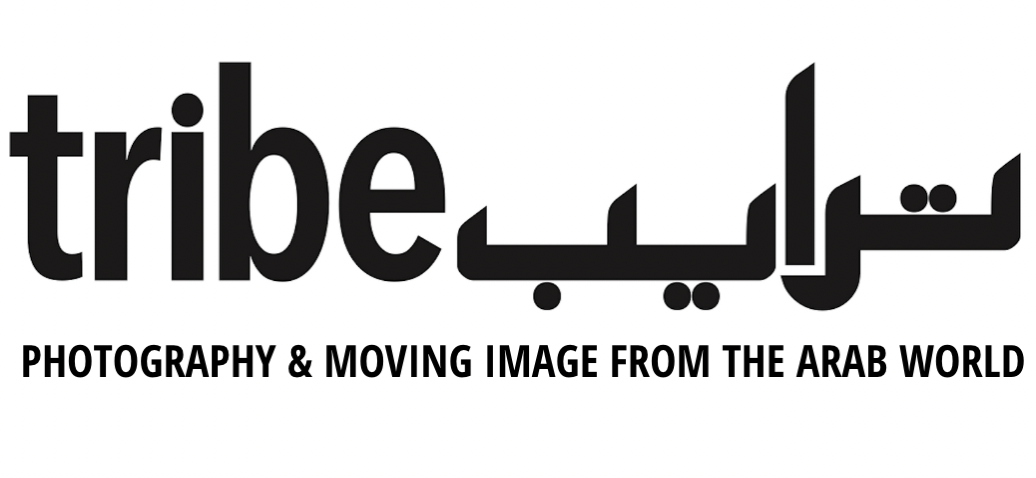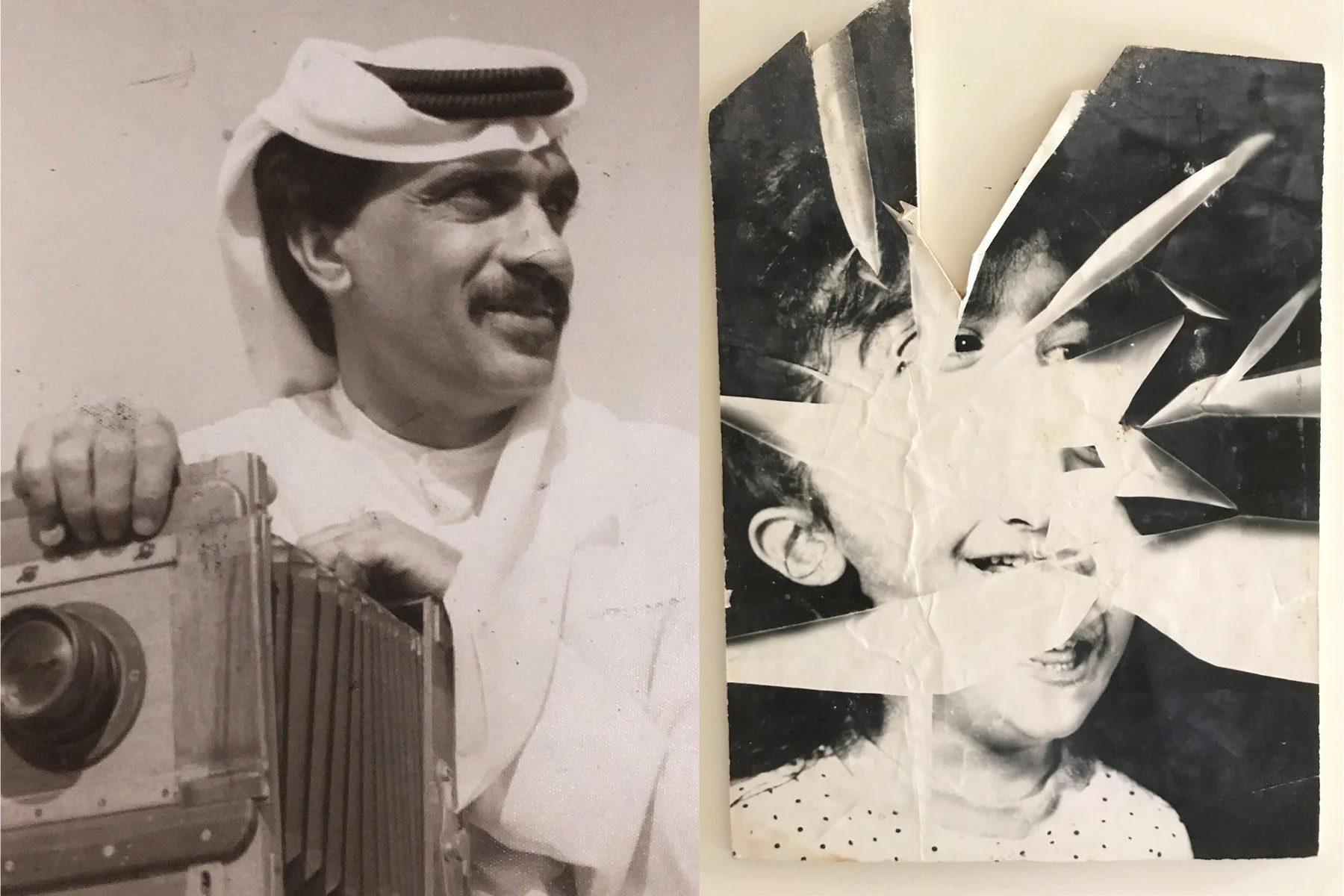Saleh Al Ustad: A UAE Pioneer Photographer
Revolutionary ideas on the forefront of change
Left to Right: Saleh Al Ustad Portrait; Saleh Al Ustad, Untitled (1992). Courtesy of the artist's family.
With text by Suzy Sikorski, art historian and writer.
Over the past year, I have been interviewing pioneer artists from the UAE, putting together puzzle pieces spanning 40 years of history across four generations. I set out to document these custodians of an age- old era, archiving the stories of just a handful of sculptors, painters and photographers who challenged themselves to build the foundations of new development in art.
One of these respected artists was Saleh Al Ustad, who sadly departed us this April 2018. Saleh was one of the first fine arts photographers and film instructors in the UAE, actively contributing to the contemporary photography movement since the early 1980s. Along with being a member of the Emirates Fine Art Society (EFAS) and a founder of the UAE Photography Society, he was Vice President of the Union of Arab Photographers up until his passing. He received numerous recognitions, including the Sheikh Mansour Bin Mohammad Photography ‘Character of the Year’ Award in 2013, and several Sultan Bin Ali Al Owais Cultural Awards, among others.
I had the privilege of interviewing Saleh last Ramadan, accompanied by our friend Dr. Mohamed Yousif, the first Chairman of the EFAS. Salvaging a treasure trove of film photographs that he kept in impeccable condition, Saleh showed me his memorable negatives from the United States, the Middle East and Asia as well as exhibition photographs he took of UAE Sheikhs and artists presenting their work since the early 1980s. Saleh, like many other photographers during that time, assumed the position of both a recorder of historical arts events as well as a teacher for the future of fine arts photography.
Paying homage to the earlier photographers in the region he states in an earlier interview for the Sheikh Mansour Photography Award ‘My local photography appreciation goes to our fathers in the region, who struggled at times when there were no photo development tools available, such as paper and chemicals which were monopolized by foreigners. But photographers like Al Hasawi, Al Kajoor, Al Bah and others struggled to leave a treasure of negatives that unfortunately focused on personal photos only.’
Saleh was one of the few Emirati artists to study in the United States from 1979-1984, finding himself at Chapman University in Southern California, at a time when the region was heavily impacted by the ‘Light and Space’ movement, and it’s exploration into op art, minimalism and geometric abstraction. Returning to the UAE in 1984, he was welcomed by the then EFAS Chairman, Dr. Mohamed Yousif, to spearhead film photography education in workshops and courses, building one of the first dark rooms for artists using the balcony of a villa that was given to the EFAS. In that same year Saleh organized the first black and white photography workshop with photographer Jassim Al Awadhi.
Like many other pioneers at the time, the EFAS became his second home. Together with others who just returned from Cairo, Baghdad and London, he engaged in critical debates on art history and theory and through this, fine art photography became a widely accepted art form for the community. It is noted during this time that the late artist Hassan Sharif also returned from the UAE from the Byam Shaw School of Art (today Central Saint Martins) in the UK, bringing with him British Constructivist inspired photography techniques and closely impacting other younger artists such as Mohammed Kazem.
Saleh defined photography as both an art and a science. It is not only uniquely dependent on the human touch, but also developed through a careful interplay between light, temperature and movement. It is through this reasoning that he defended this practice within a society that highly rejected the use of photography. Utilizing the dark room space, he experimented with the processes of developing film, enjoying a new abstract technique that he would employ within his workshops in the EFAS darkroom.
Saleh was in Middle School when he was first introduced to the concept of film photography by a photography studio on Al Rolla Street. Displaying a multi-exposed image of a half fish and half human, he was curious as to how to replicate the technique, albeit the owner refused to tell him the secret. Almost 15 years later, at his first EFAS exhibition in 1985, he found himself perfecting this same process, only this time depicting a half chicken and half head of Pink Panther, a kitschy duality between feeling like a tiger but still upholding the traits of a pink panther.
In Spring 2018 I found myself again in his majlis, only now with his two sons and Dr. Mohamed Yousif, all of us sharing our memories of an artist, father, friend and colleague who left a lasting impression and legacy to those who he touched. Towards the later years of his life, traveling between Thailand and the UAE, Saleh remained fervently passionate about his camera and even retained his position as VP of the Union of Arab Photographers, working closely with Jassim Awadhi and Adeeb Al Ani.
Closely holding his father’s camera, his son Ali tells me ‘My father was always open to new ideas and constantly challenging himself. He never stopped learning and he enforced this principle in his children who never could take the ‘automatic setting’ in our life. For myself and so many people who knew him at work, in exhibitions, and as a student, Saleh was a symbol of integrity and compassion, overcoming all obstacles whether the barrier be technology, language or society. His revolutionary ideas, practices and travels remain with us, and I now am in a position to carry on the legacy of one of the most important pioneer artists in our local history.’


